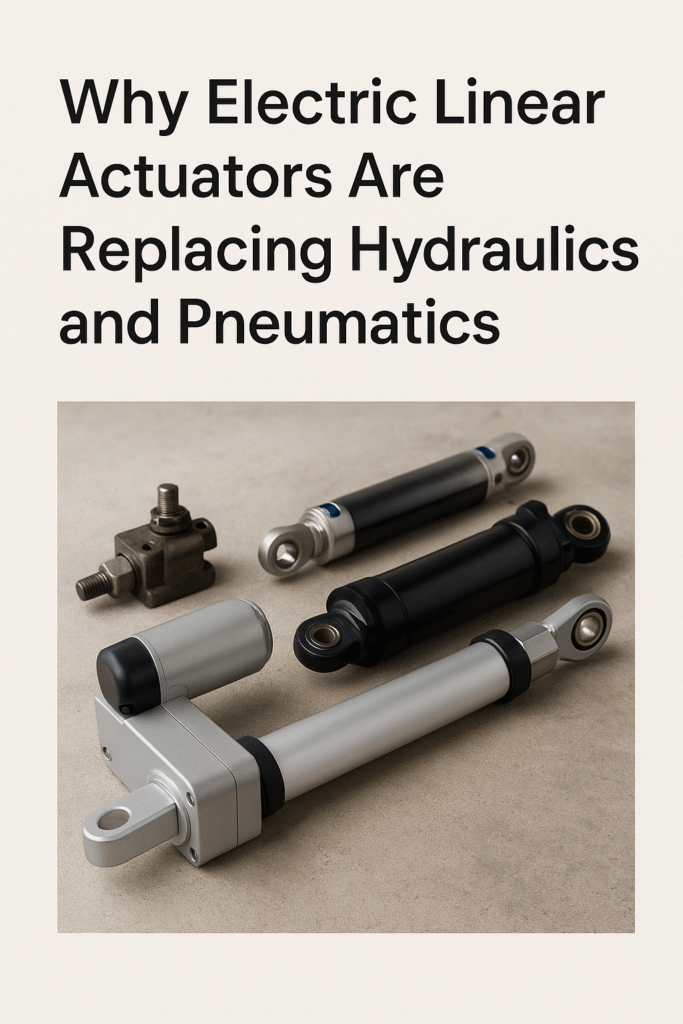A few years ago, inside a mid-sized factory in Coimbatore, a frustrated maintenance engineer named Karthik stood in front of a leaking hydraulic cylinder. Oil had spilled again, production was halted, and workers were waiting idle. This wasn’t the first time. He looked at the mess and thought, “There has to be a better way” Linear Actuators.
This exact moment triggered a shift that many industries are now experiencing: the transition from traditional hydraulic and pneumatic actuators to electric linear actuators.

From Messy Maintenance to Clean Precision
Karthik had been dealing with hydraulics for over a decade—constant oil leakages, pressure drop issues, and high maintenance. Pneumatics weren’t much better. Though faster, they lacked control. Every fix meant downtime, and every downtime meant losses.
After a meeting with the automation supplier, Karthik was introduced to electric linear actuators. No oil, no compressors, just a clean and precise motion system that could be plugged in and controlled with high accuracy.
The First Installation
They started small. One actuator was installed in a tilting application of a mixing pan. Everyone watched as the actuator smoothly tilted the pan without any noise, leakage, or jerks. Karthik smiled, “This is what we’ve been missing.”
Within months, the factory began replacing outdated systems. The biggest surprise? Energy savings. No running compressors. No hydraulic pumps. Just power-on-demand.
Why the Industry is Following
Karthik’s story is now becoming common across India. Industries are making the shift for solid reasons:
- Clean and leak-free operation — no hydraulic fluids or air lines
- Precise motion control — position feedback and programmable stops
- Low maintenance — no fluid change, fewer moving parts
- Energy efficient — power used only during motion
- Compact and easy to install — just plug and play
The Future is Electric
From food processing to automotive and even textile industries, electric actuators are becoming the new standard. Factories are cleaner, maintenance calls are down, and control is at the operator’s fingertips.
Karthik? He’s now a strong advocate of all-electric motion. “I used to fix machines. Now I help upgrade them,” he says proudly.
And that’s the reality—electric linear actuators are not just replacements; they are upgrades.
